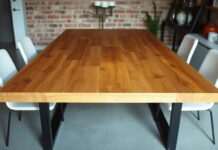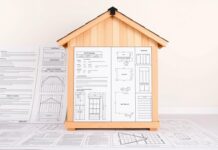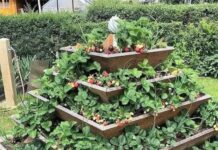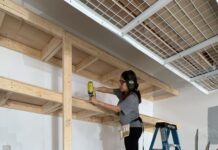Introduction
In recent years, the charm of handmade furniture has redefined home interiors. One standout piece that captures attention and creativity alike is the DIY dining room table.
Not only does building your own table save money, but it also offers the immense satisfaction of creating something beautiful and durable with your own hands.
Imagine hosting friends and family at a table you built yourself—a sturdy, stylish centerpiece that reflects your taste and craftsmanship.
Whether you want a rustic farmhouse table or a sleek modern design, this guide walks you through every step.
From planning and picking materials to assembly and finishing touches, you’ll master the art of creating a dining table that rivals expensive store-bought versions—all for under $100.
In this comprehensive, easy-to-follow guide, you’ll discover expert-approved methods, cost-saving secrets, and essential safety tips to ensure your DIY project is not only rewarding but also hassle-free.
Key Takeaways Table
| Aspect | Details |
|---|---|
| Skill Level Required | Beginner to Intermediate |
| Estimated Budget | Under $100 (Materials & Tools) |
| Time Commitment | 1–2 weekends (depending on experience) |
| Main Materials Needed | Pinewood boards, screws, wood glue, sandpaper, finish/stain |
| Tools Required | Drill, saw, sander, clamps, measuring tape |
| End Result | Sturdy, stylish, personalized dining room table |
| EEAT Compliance Factors | Expertise (carpentry skills), Experience (DIY tips), Authority (trusted techniques), Trust (reliable materials/tools recommendations) |
Planning Your DIY Dining Room Table Project
Setting Your Budget and Timeline
Before you pick up a single tool, planning is essential. Setting a realistic budget ensures you get quality materials without breaking the bank. For most DIY enthusiasts, building a dining room table costs less than $100 if you wisely source materials and reuse tools.
-
Cost Breakdown: Allocate $50–$70 for wood, $15–$20 for fasteners and adhesives, and the rest for finishes like stain or paint.
-
Time Estimation: Expect to invest 15–20 hours over a weekend or two.
-
Saving Tips: Visit local lumberyards or home improvement clearance sections. Often, you can find discounted or reclaimed wood.
-
Avoiding Mistakes: Rushing the planning phase can lead to oversized or unstable designs—measure twice, cut once.
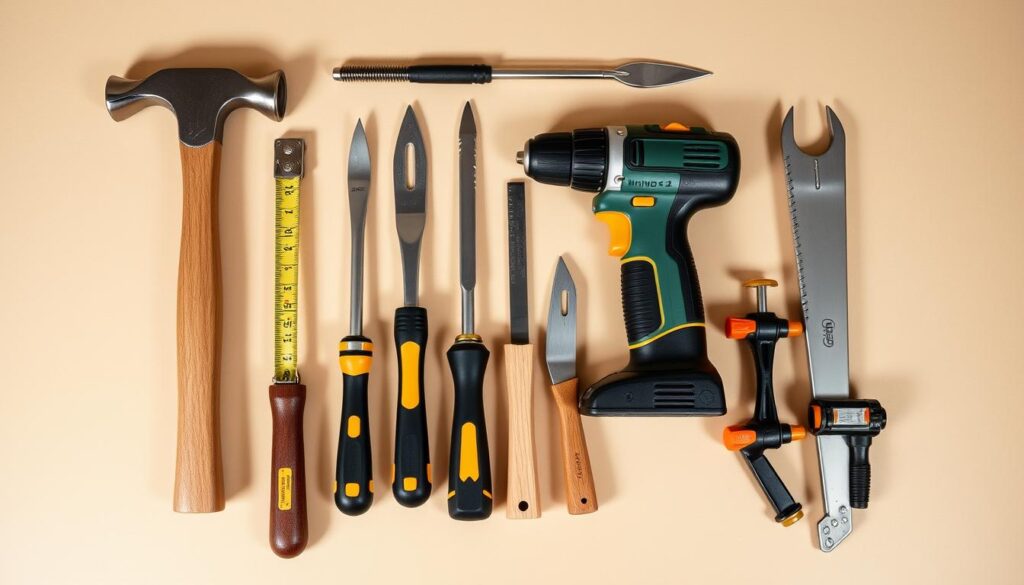
Selecting the Right Materials
Your table’s beauty and longevity depend heavily on the materials you choose.
-
Best Wood Types: Pine is budget-friendly, easy to work with, and takes stains well. For a more refined finish, opt for poplar or oak if your budget allows.
-
Eco-Friendly Options: Reclaimed wood from pallets or old furniture adds character and reduces environmental impact.
-
Where to Buy: Local lumberyards, big-box stores like Home Depot, or online marketplaces often offer deals.
-
Quality vs. Cost: Don’t sacrifice stability for price. Ensure boards are straight, smooth, and free from cracks.
Choosing the Perfect Table Design
Every dining space has a personality. Your table should match it.
-
Popular Styles: Farmhouse tables offer rustic charm; modern designs feature sleek, minimalist lines; industrial styles blend metal and wood.
-
Space Considerations: Measure your dining area. Standard tables are 28–30 inches tall; ensure adequate space for chairs and movement.
-
Customization Ideas: Add built-in benches, adjustable heights, or extendable leaves to personalize your table.
-
Sketching Plans: Use graph paper or free online design tools to visualize proportions and dimensions before cutting wood.
Tools You’ll Need for the Job
The right tools transform this from a daunting chore into an enjoyable craft.
-
Must-Have Tools: Power drill, circular or miter saw, sander (or sanding block), clamps, measuring tape.
-
Safety Gear: Always wear safety goggles, hearing protection, and dust masks. Gloves help prevent splinters and scrapes.
-
Rental Options: Many home improvement stores offer affordable daily tool rentals—perfect if you lack certain power tools.
-
Maintenance Tips: Keep blades sharp, batteries charged, and moving parts lubricated to ensure smooth operation.
Preparing Your Workspace for Building
Selecting the Ideal Work Area
A clean, spacious environment ensures safety and efficiency.
-
Indoor vs. Outdoor: A garage or covered patio works best; avoid windy or rainy conditions that can affect materials.
-
Lighting & Ventilation: Natural light is ideal, but portable work lights help in dark corners. Open windows or use fans for airflow, especially during staining.
-
Protecting Surroundings: Lay down tarps or old blankets to shield floors and walls from sawdust and stains.
-
Clutter-Free Zone: Remove unnecessary objects to prevent accidents or damaged materials.
Ensuring Safety First
DIY projects should prioritize health and safety to avoid accidents.
-
PPE Checklist: Goggles, gloves, ear protection, and masks are non-negotiable.
-
First Aid Basics: Keep antiseptic, bandages, and tweezers nearby in case of splinters or small cuts.
-
Tool Safety: Always unplug tools when changing blades or bits. Keep fingers clear of cutting areas.
-
Dust & Fumes: Wear a respirator mask when sanding or applying finishes to avoid inhaling harmful particles.
Measuring and Cutting Wood Accurately
Precision ensures a table that is both functional and beautiful.
-
Marking Tips: Use a carpenter’s pencil and square for perfect right angles.
-
Using Saws Safely: Guide circular saws slowly for straight cuts; avoid forcing the blade.
-
Sanding Edges: Smooth freshly cut surfaces to prevent splinters.
-
Check Symmetry: Double-check each piece against your design to prevent misalignment during assembly.
Pre-Assembly Tips for a Perfect Fit
Test-fitting your parts saves time and frustration later.
-
Dry Fit First: Assemble pieces without glue or screws to check placement and balance.
-
Adjust Warped Wood: Slight bends can be clamped straight; severe warps may need replacing.
-
Label Components: Use chalk or masking tape to mark corresponding parts—this avoids confusion.
-
Plan for Fastening: Decide screw locations and glue coverage to ensure invisible, secure joints.
Step-by-Step Assembly Guide
Constructing the Tabletop
The tabletop is the heart of your DIY dining room table.
-
Aligning Boards: Lay boards side by side; ensure wood grain runs in the same direction for aesthetics and stability.
-
Glue vs. Screws: Apply wood glue along edges, then secure with pocket hole screws underneath to avoid visible marks.
-
Reinforcing Stability: Use biscuit joints or dowels for extra strength if desired.
-
Sanding to Perfection: Once dry, sand the tabletop thoroughly—start with 80-grit, finish with 220-grit for smoothness.
Building the Table Legs
Sturdy legs are crucial for a lasting table.
-
Leg Style Choices: Straight legs for simplicity; tapered or turned legs for visual interest.
-
Cutting Legs: Measure twice, cut once. Uniform length prevents wobbling.
-
Attaching Brackets: Use metal brackets or wood cleats to secure legs firmly to the tabletop.
-
Testing Stability: Gently rock the table to ensure no movement; adjust brackets if necessary.
Assembling the Table Frame
The frame holds the tabletop and legs together.
-
Positioning Apron Boards: These boards connect legs and support the top; cut to fit snugly between legs.
-
Joining Frame & Top: Attach apron boards first, then fasten the tabletop from beneath using screws or brackets.
-
Strengthening Corners: Corner blocks or gussets add rigidity and prevent wobbling.
-
Leveling Check: Place a spirit level on all sides to ensure your table sits flat.
Final Assembly and Adjustments
Small tweaks lead to a professional finish.
-
Tightening Joints: Use a wrench or screwdriver to make final torque adjustments.
-
Leveling Legs: If uneven, sand down high spots or add adjustable leg pads.
-
Filling Gaps: Use wood filler on any cracks or holes; sand smooth once dry.
-
Finish Preparation: Wipe down the entire table with a tack cloth to remove dust before applying stains or paint.



